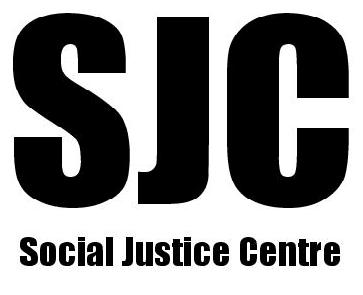By Jeff Shantz and Eva Ureta
On April 27, 2019, a mix of academics and artists gathered at OR Gallery in downtown Vancouver to discuss the relationships of art to financialization, debt, and capitalist markets. Speakers included, in order of presentation, Max Haiven (Lakehead University), Noah Fischer (Occupy Museums), and Cassie Thornton (Feminist Economics Department).
Haiven, began the discussion stressing the deep integration of arts within financial markets. He referred to artistic gentrification and the longstanding role played by arts in gentrification—as “value added” (for capital) in neighborhoods displacing poor residents in pursuit of investment and profit.
Haiven then highlighted the Indonesian Free Port, a collection of art held by global capital in a luxury storage space for high end art. The site is so private, and secretive, that no one knows all of the pieces held there. The artworks in the vaults are pure commodities for trade. No one, except investors, can even access them—so are they art anymore? Pieces can be sold multiple times a minute, day, week, month, year. They circulate only as value, simply by an exchange of ownership documents. This relates too to debt as it is primarily financiers who are the demand in the global art market—those who own the debt of everyone else.
Artists today represent part of the vanguard of new configurations of labor according to Haiven. They are a model for flexibilized capitalism. They are forced to pursue innovation for survival in an austere global market.
So, there are important questions. Can art and artists create autonomy and experimental spaces? What are the possibilities? How does art raise possibilities?
Next up was Noah Fischer who notes that art’s relationship to creativity and dreams are also central to contemporary capitalism. He starts with a story from Zuccotti Park in 2011—Occupy Wall Street (OWS). Fischer says he saw OWS not as a protest but as a “nation state” (his words)—curious, indeed, given the anarchist impetus and form of OWS. Explaining further, Fischer says he saw a sense of autonomy and freedom. A creative space for social art, at a visible level and outside of the financialization of art. He saw creation in the form of protest—in the form of shaming. Shaming was directed at institutions and at figures like New York’s Mayor Bloomberg.
Fischer helped create Occupy Museums out of the creative collective at OWS. Museums are sites of capital flow under a cultural cover—money laundering, brand washing of fossil fuel corporations, colonialism, and the sanitizing of leftist histories of resistance. Occupy Museums sought to re/claim the content inside museums as political. It looked to highlight the relationships within museums as spaces of the one percent. They used shaming politics which did get some media attention.
From there Fischer shifted to a “Trojan Horse” tactic—Debtfair Version 1 and the Debt Exchange. These involved special exhibitions which curated artists according to data from their financial lives. They displayed art in the walls, not on the walls. They displayed the economic lives of the artists. These included experiences of debt and evictions—and how these impact the artists and their art.
They also mapped debt and targeted institutions related to the debt. This led to the doorsteps of Black Rock. Black Rock had been relatively small before the 2008 crisis. It grew afterward as Director Larry Fink figured out how to valorize bad debt. Fink, it turns out was also on the Board of the Museum of Modern Art (MOMA).
Fischer pointed out that eight out of ten of the most expensive schools in the US are art schools. Yet art graduates make less money than high school drop outs do on average. Capital makes money off of failure—but shows success (the few artists who make it).
Fischer noted in the discussion that museums are held out by elites as part of the deal of democracy. They are spaces where treasures can be accessed by the public temporarily and under specific conditions, Unlike the storage facility of the Indonesian Free Port.
Cassie Thornton wrapped up with a discussion or the Feminist Economics Department and Public xEducationx Transformation projects. In Thornton’s view, feminist theory must be about abolition—destroying entire structures. And developing alternatives. Her work focuses on videos that play with value and values. One project highlighted was the Desperate Holding Real Estate Agents which showed listings for the homes of capital, eviction lawyers, landlords, etc. in San Francisco. The listings gave their addresses and said they should be reclaimed—re-expropriated. The aim was to transform relations to land, property, and homes.
One issue with the discussion was the very limited political view fixated on shaming politics (not that they were not harsh enough for the task at hand—but that they are supposedly too harsh and perhaps dehumanize the capitalist targets). But direct action activists have known for some time that shame politics are ineffective because you cannot shame those who have no shame. Shame politics assumes that economic and political power holders can be embarrassed into acting against their own self interests. It assumes that they do not already know what they are doing, why, and the harms they are inflicting on people, society, the planet (Hint: They do).
It assumes economic and political power holders share human values with those they exploit- But they are already dehumanized in relation to the human values of the exploited and oppressed. In fact, though, they have dehumanized themselves, voluntarily, willingly—in becoming and remaining exploiters and oppressors.
Digital-Debt-Empire was a suite of events, publications, media and collaborations centred around a gathering of scholars, activists and artists in Vancouver, 25-28 April of 2019.












